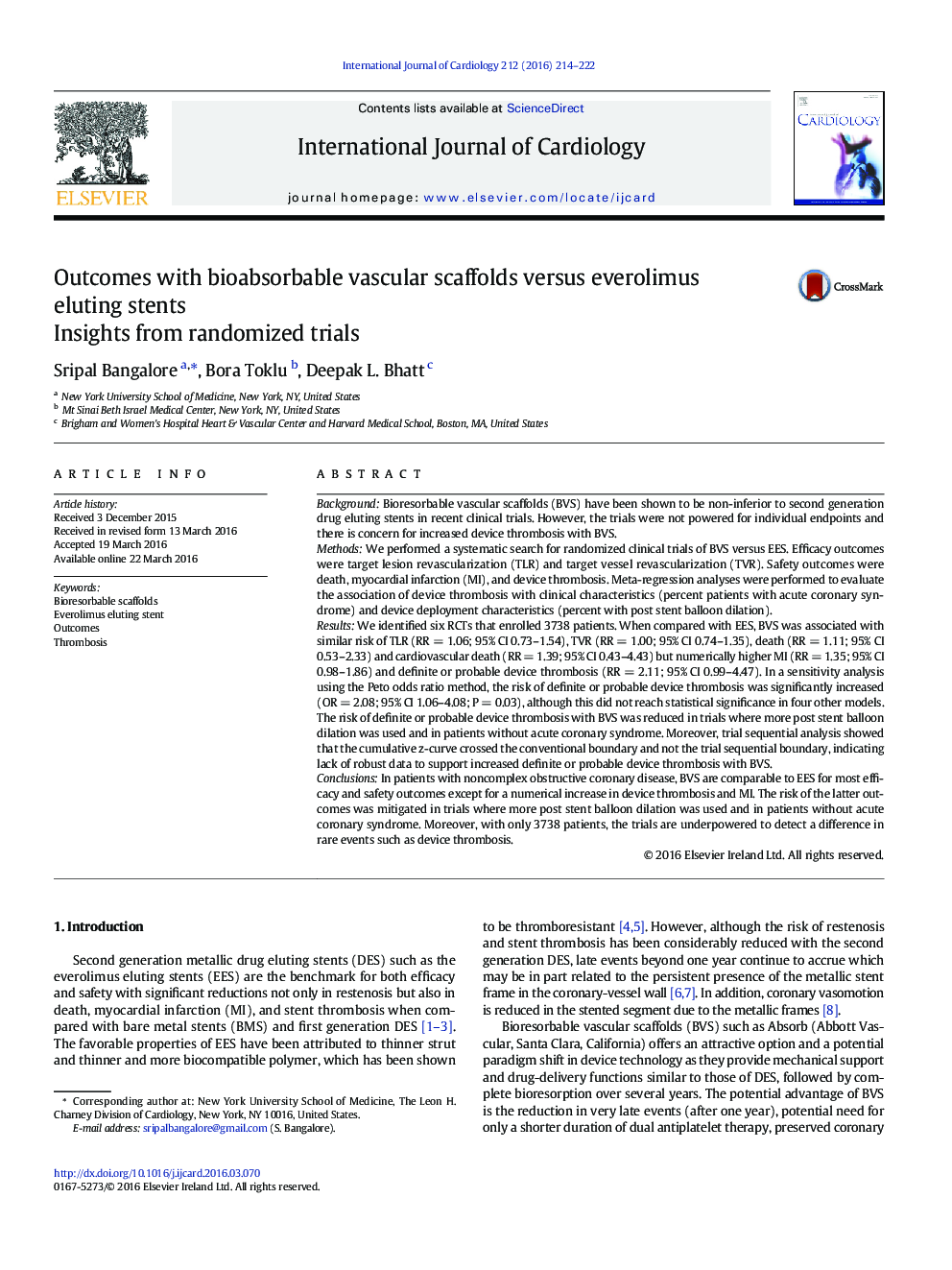| کد مقاله | کد نشریه | سال انتشار | مقاله انگلیسی | نسخه تمام متن |
|---|---|---|---|---|
| 5964376 | 1576137 | 2016 | 9 صفحه PDF | دانلود رایگان |
BackgroundBioresorbable vascular scaffolds (BVS) have been shown to be non-inferior to second generation drug eluting stents in recent clinical trials. However, the trials were not powered for individual endpoints and there is concern for increased device thrombosis with BVS.MethodsWe performed a systematic search for randomized clinical trials of BVS versus EES. Efficacy outcomes were target lesion revascularization (TLR) and target vessel revascularization (TVR). Safety outcomes were death, myocardial infarction (MI), and device thrombosis. Meta-regression analyses were performed to evaluate the association of device thrombosis with clinical characteristics (percent patients with acute coronary syndrome) and device deployment characteristics (percent with post stent balloon dilation).ResultsWe identified six RCTs that enrolled 3738 patients. When compared with EES, BVS was associated with similar risk of TLR (RRÂ =Â 1.06; 95% CI 0.73-1.54), TVR (RRÂ =Â 1.00; 95% CI 0.74-1.35), death (RRÂ =Â 1.11; 95% CI 0.53-2.33) and cardiovascular death (RRÂ =Â 1.39; 95% CI 0.43-4.43) but numerically higher MI (RRÂ =Â 1.35; 95% CI 0.98-1.86) and definite or probable device thrombosis (RRÂ =Â 2.11; 95% CI 0.99-4.47). In a sensitivity analysis using the Peto odds ratio method, the risk of definite or probable device thrombosis was significantly increased (ORÂ =Â 2.08; 95% CI 1.06-4.08; PÂ =Â 0.03), although this did not reach statistical significance in four other models. The risk of definite or probable device thrombosis with BVS was reduced in trials where more post stent balloon dilation was used and in patients without acute coronary syndrome. Moreover, trial sequential analysis showed that the cumulative z-curve crossed the conventional boundary and not the trial sequential boundary, indicating lack of robust data to support increased definite or probable device thrombosis with BVS.ConclusionsIn patients with noncomplex obstructive coronary disease, BVS are comparable to EES for most efficacy and safety outcomes except for a numerical increase in device thrombosis and MI. The risk of the latter outcomes was mitigated in trials where more post stent balloon dilation was used and in patients without acute coronary syndrome. Moreover, with only 3738 patients, the trials are underpowered to detect a difference in rare events such as device thrombosis.
Journal: International Journal of Cardiology - Volume 212, 1 June 2016, Pages 214-222
